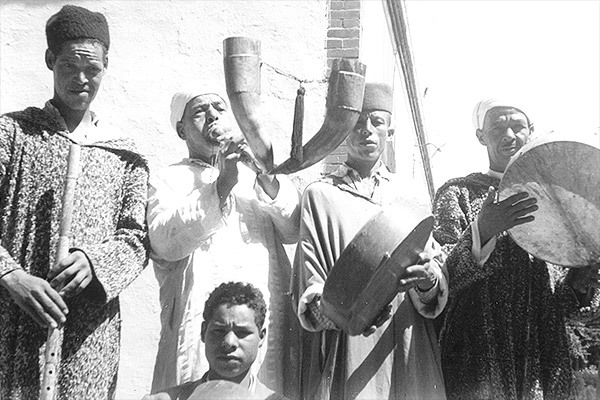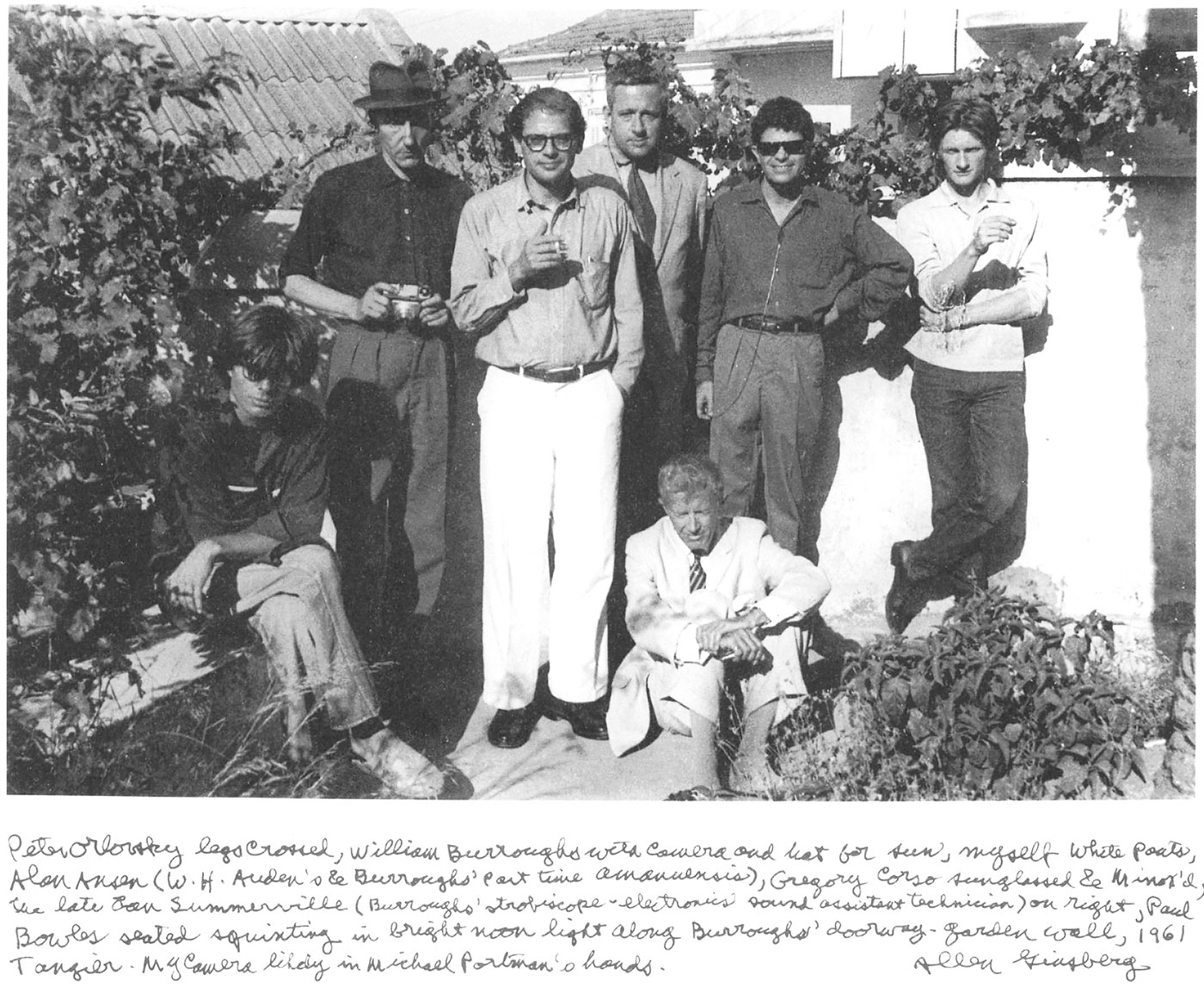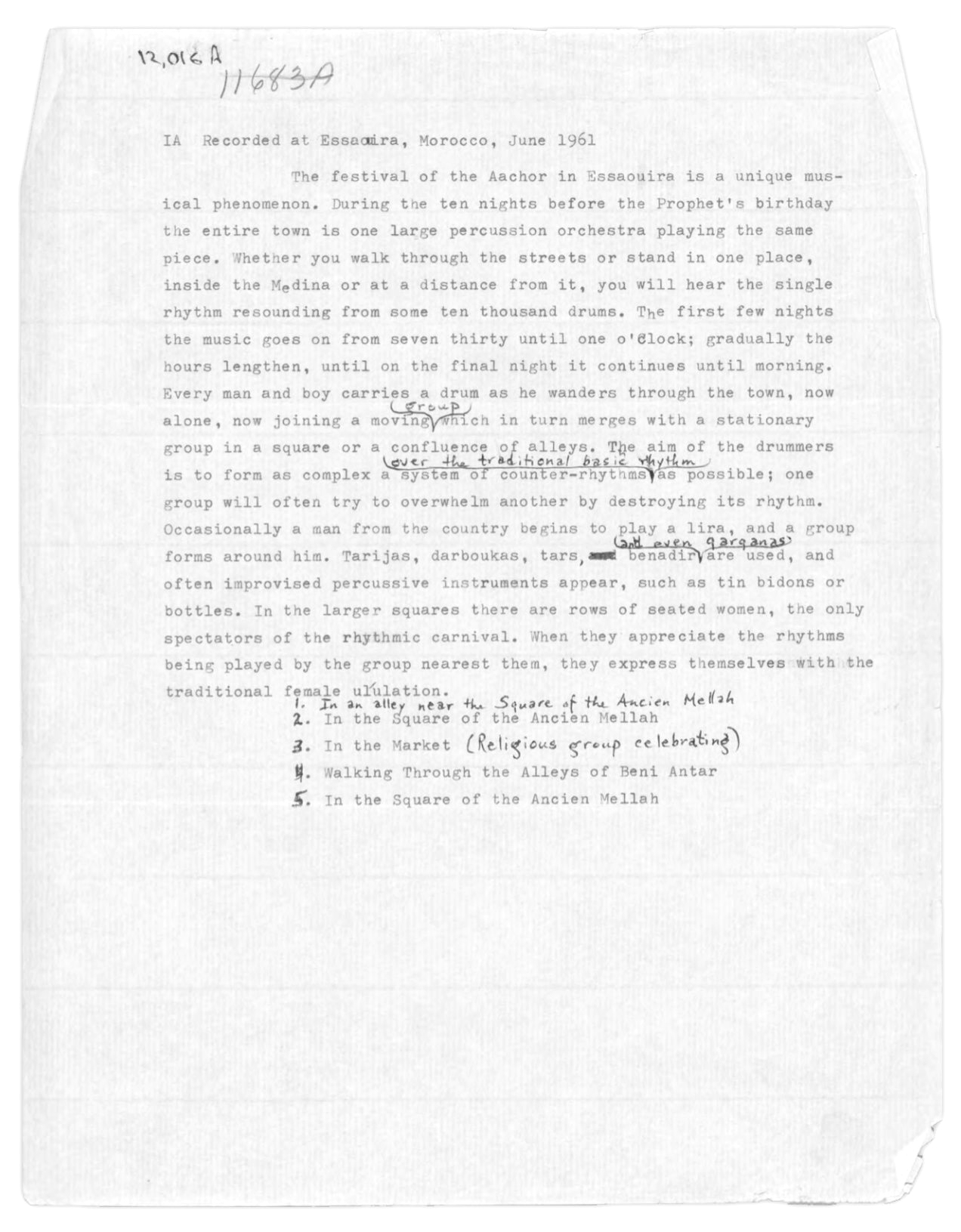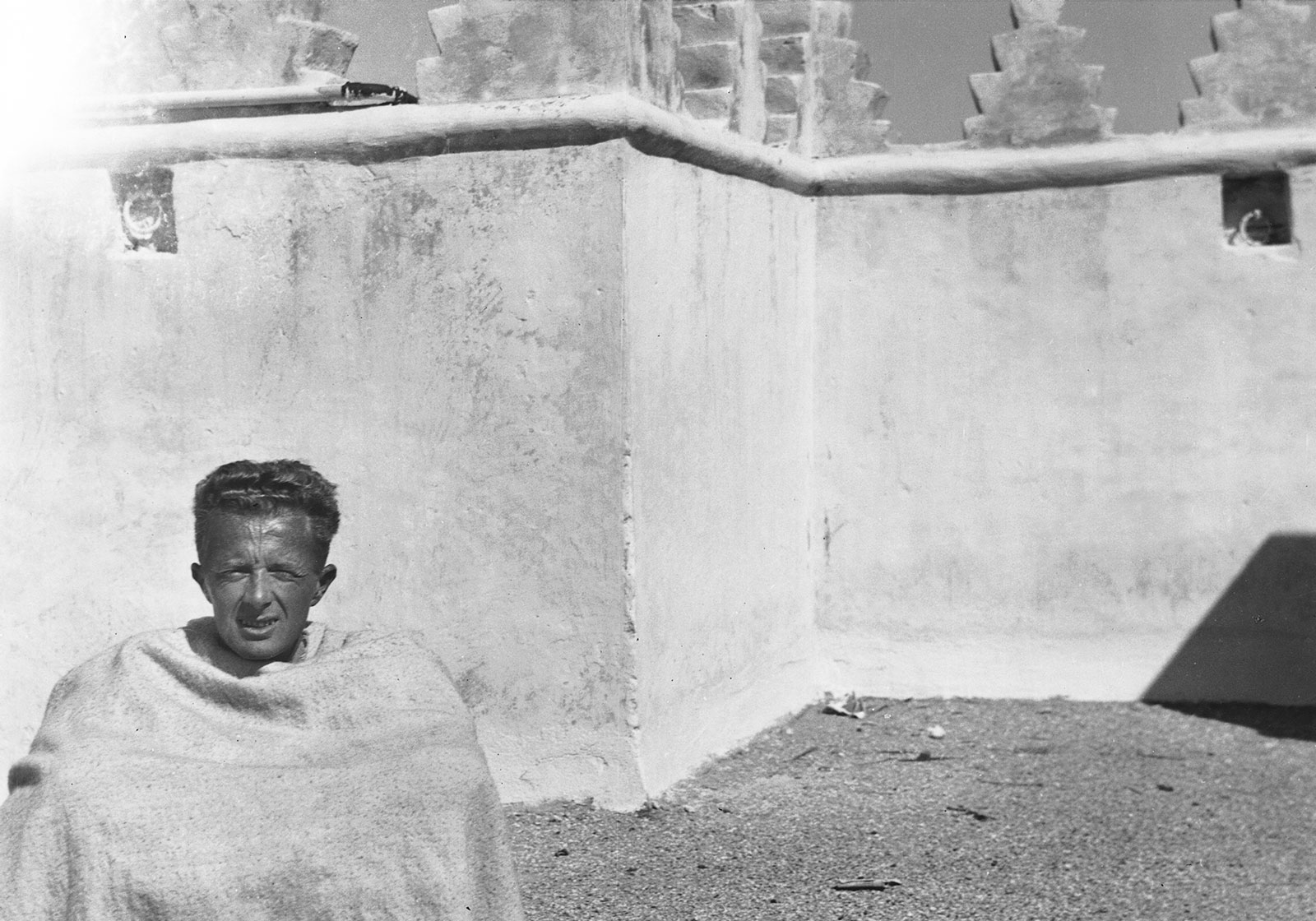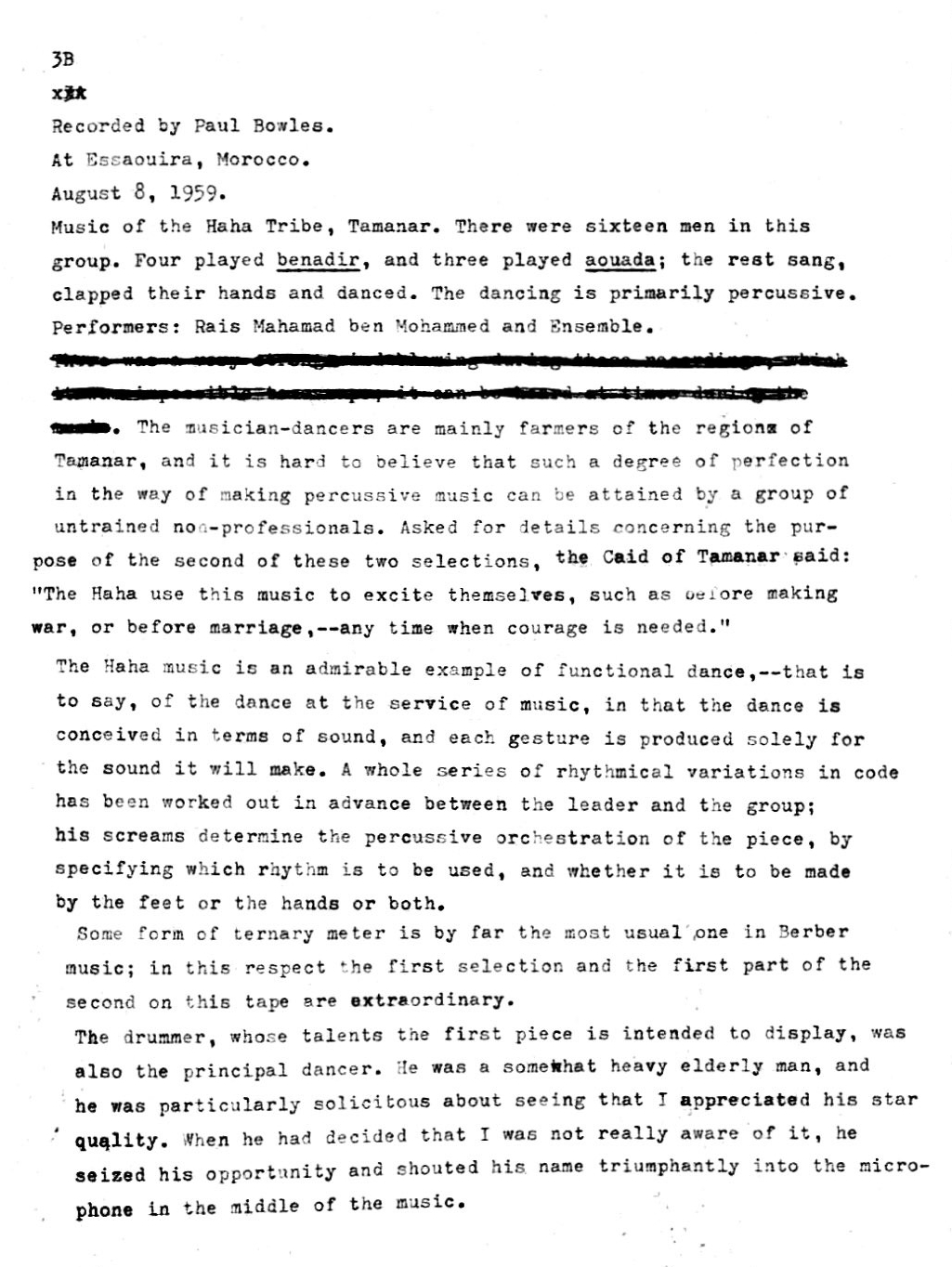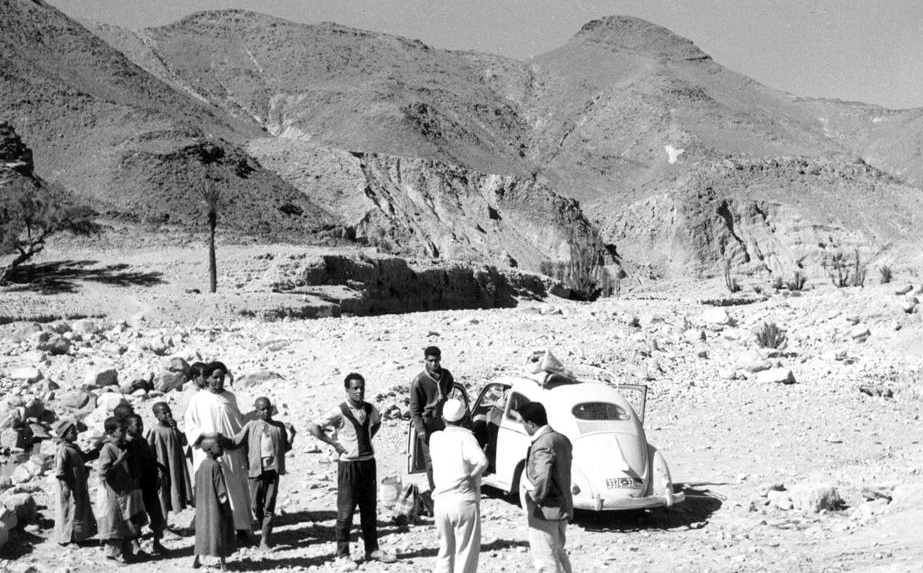
Morocco: Beneath The Sheltering Sky
Equipped with a Volkswagen Beetle, an Ampex 601 tape recorder the size of a suitcase and a trunk full of "piping hot Pepsi" Paul Bowles set out in 1959 to record as many hours of Moroccan folk music as possible. Accompanied by a Canadian expatriate and a Moroccan assistant they covered the entire coast from Tangier to Goulimine in the south, went over both the Rif and Atlas mountain range to the dune desert of Zagora and the border to Algeria.


During the four-month field project sponsored by the Library of Congress Bowles drove almost 40'000 km and captured vocal and instrumental music of various tribes and other indigenous populations at 23 locations throughout the country. The greatest difficulty turned out to be the government’s position that the region’s tribal culture was a hindrance to bigger dreams of development, and so Bowles found himself in a run against time, fearing his subject would be lost forever.
While he was best known as author of The Sheltering Sky, a 1949 novel about displaced Americans travelling the North African desert, Bowles was also a composer with ties to Aaron Copland and John Cage as well a creator of theatre music for Orson Welles, but "didn’t have much patience for scholarship, didn’t like music theory, didn’t like to operate by the rules," says ethnomusicologist Philip Schuyler and yet collecting the recordings re-issued by Dust-to-Digital "in almost every instance, Bowles had made the best choice, technically and musically."
Husband of the brilliant writer Jane Bowles, he kept living in Tangier till his death, a city that became an outpost for leading lights of the Beat Generation, with Burroughs a mainstay as well as Brion Gysin, Allen Ginsberg, Gregory Corso and others.
While he was best known as author of The Sheltering Sky, a 1949 novel about displaced Americans travelling the North African desert, Bowles was also a composer with ties to Aaron Copland and John Cage as well a creator of theatre music for Orson Welles, but "didn’t have much patience for scholarship, didn’t like music theory, didn’t like to operate by the rules," says ethnomusicologist Philip Schuyler and yet collecting the recordings re-issued by Dust-to-Digital "in almost every instance, Bowles had made the best choice, technically and musically."
Husband of the brilliant writer Jane Bowles, he kept living in Tangier till his death, a city that became an outpost for leading lights of the Beat Generation, with Burroughs a mainstay as well as Brion Gysin, Allen Ginsberg, Gregory Corso and others.
